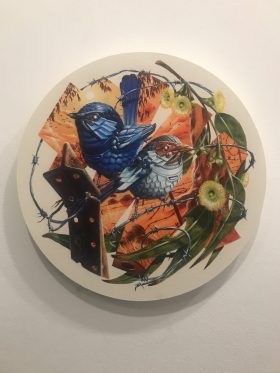Automation technology may be the future of work, with experts arguing that many jobs will be automated by 2030s, but human creativity will always be needed.
‘This has been science fiction for many years but we’ve now hit a time where it’s actually reality and jobs are disappearing all the time because of that. But other jobs are being created and the ones that are being created are the ones that require creativity because they can’t be artificially manufactured yet,’ said Dr Russell Kennedy, Head of Screen and Design and Senior Lecturer in Screen and Design, School of Communication and Creative Arts, Deakin University.
As we know, our ability to disrupt, be agile, or deploy creative thinking, require no uncertain amounts of creative human input. It is what enables us to respond and test ideas in new ways and, in many industries, this is what makes our humanness desirable in the face of automation.
While we often read the panic-filled belief that machines will take our jobs, the flipside of automation and growth in technologies is that experts also predict job growth. The World Economic Forum reported in 2018 that while automation will displace 75 million jobs, it will also generate 133 million new ones worldwide by 2022. That’s only two years away and fast becoming the reality.
In the context of this accelerated change, a big question faces educators and students today. How do we prepare ourselves for jobs that don’t even exist yet?
Interdisciplinary learning plays an important role in preparing people for the workplace of the (very near) future. Instead of siloed education streams, educators have needed to apply broader interdisciplinary frameworks to help their students gain creative and practical skills across different areas. This approach to curriculum is front of mind in the development of creative courses and teaching at Deakin University.
Dr Kennedy explained that across Deakin’s media, communication and creative arts course suite, there is a strong focus on core studies that enable students to build their foundational knowledge in design methodologies, creative strategies and problem solving. This, coupled with a choice of specialisations and electives across the creative disciplines, prepares students to be agile in the workforce.
What is also needed is the development of creative problem-solving skills in students, which is why the central thread of design thinking is shared across each design course at Deakin. This is what teaches students how to adapt and disrupt.
Deakin’s Graduate Certificate of Communication and Graduate Diploma of Visual Communication Design both feature Strategic Branding and Design Thinking and Problem Solving as key units in the respective programs. Design Thinking is also recommended elective in the Master of Creative Arts, Master of Communication and Master of Arts (Writing and Literature). These strategic methodologies for problem solving require students to adopt a human-centered approach to innovation that draws on their skills to integrate the needs of people, the possibilities of technology, and the requirements of business and society as a whole. The multi-discipline, interdisciplinary aspect of these units resonate with students from a variety of postgraduate streams.
‘Design thinking is a process that’s actually used not only within the design industry but also outside of the design industry to problem solve. So instead of you going through incremental steps towards success, it actually promotes failure. You should be encouraging experimentation, risk taking, and also starting the conversation earlier than the client brief.’
‘So taking it back to who the client stakeholders are. And go through an empathy phase with all of the stakeholders. And then go through a discovery phase, which then formulates the brief for the project. And you work with the client on that – and then you start, then you go into the ideation, and your prototype and testing phases,’ he said.
In the complicated context emerging during and potentially post COVID-19, upskilling and retraining as a way to find new jobs is at the forefront of many people’s minds. It is also a context where design thinking and unconventional ways to doing business are becoming more necessary – just think of the COVID-19 app. Even governments are adapting design thinking processes to develop new ways of working.
Some governments are really embracing design thinking, because they’ve tried for years to solve problems in the traditional way. They’re looking for unconventional ways to tackle some of these problems. The only real way to create innovation is to try different things, head in the opposite direction, try things and fail, take risks, prototype tests – if it doesn’t work, throw it away, try something else,’ said Dr Kennedy
To build or gain new skills that will prepare you for the future workforce, discover Deakin’s courses in media, communication and creative arts. Visit Deakin University to find out more.





